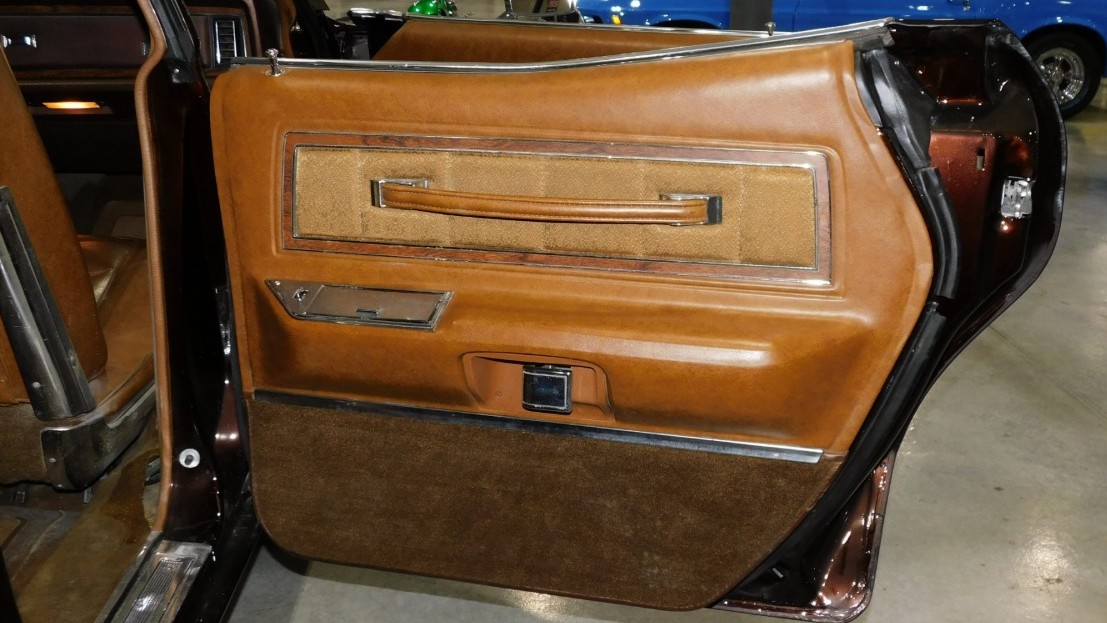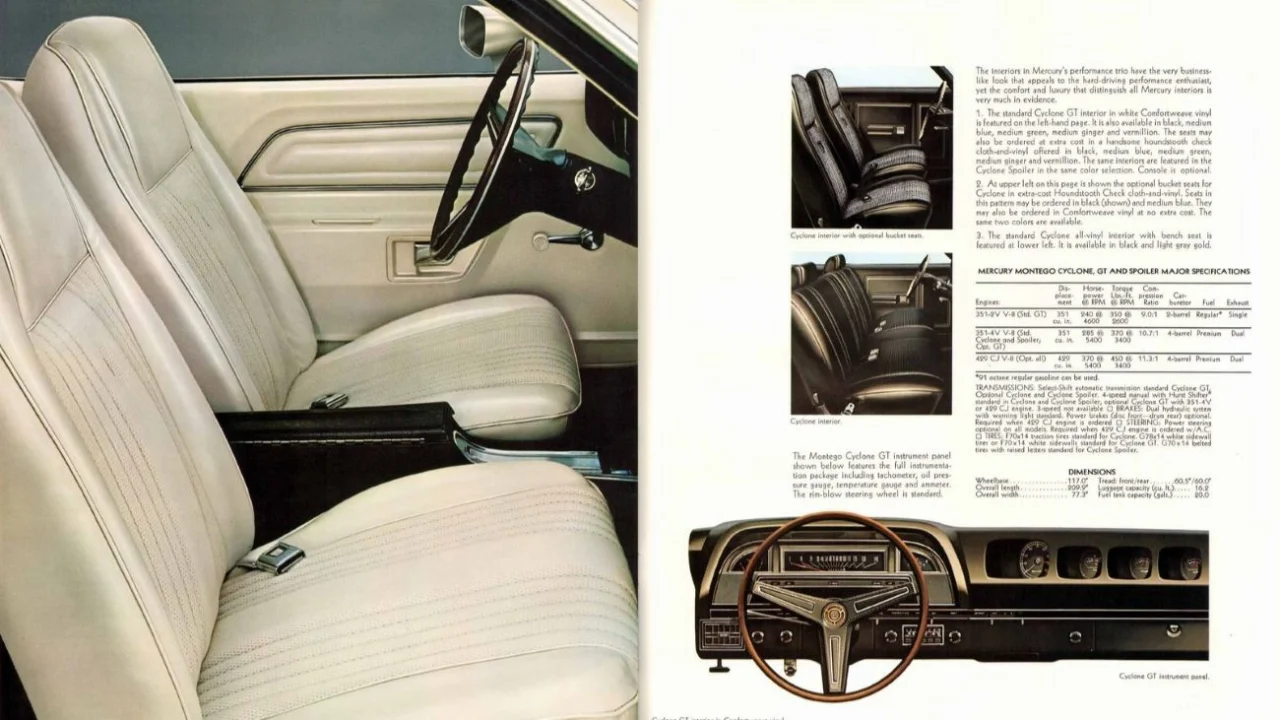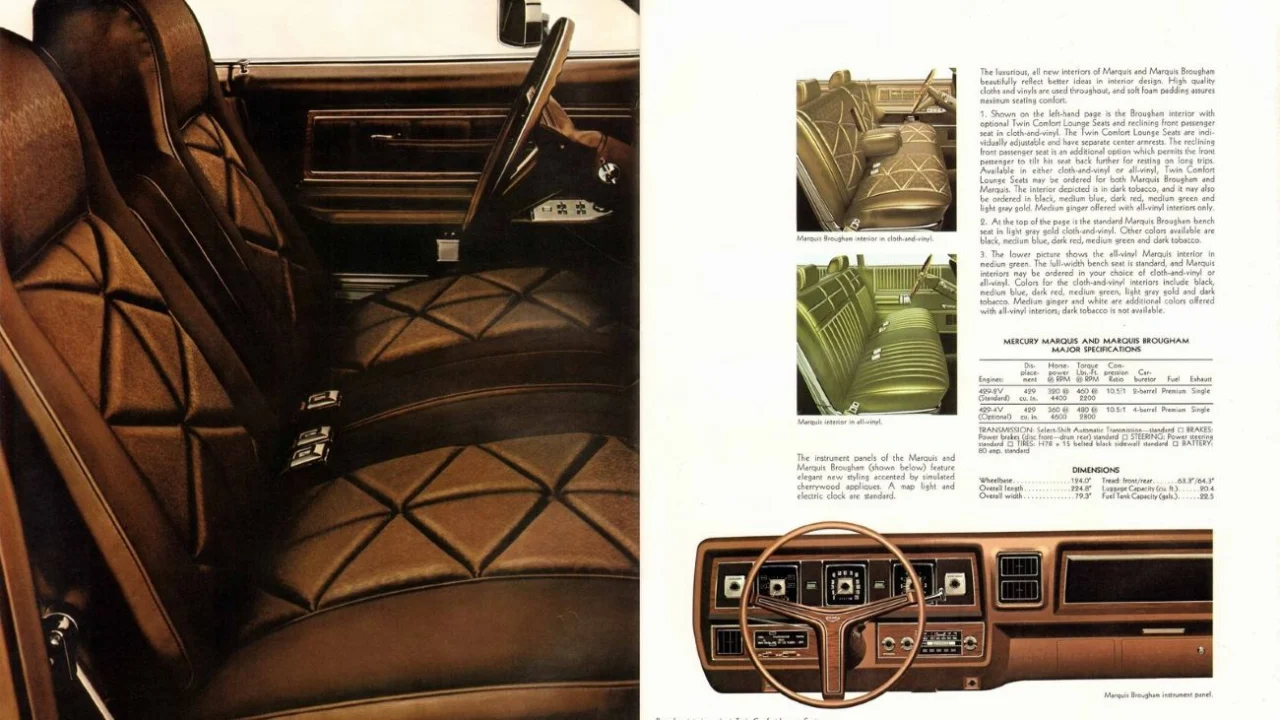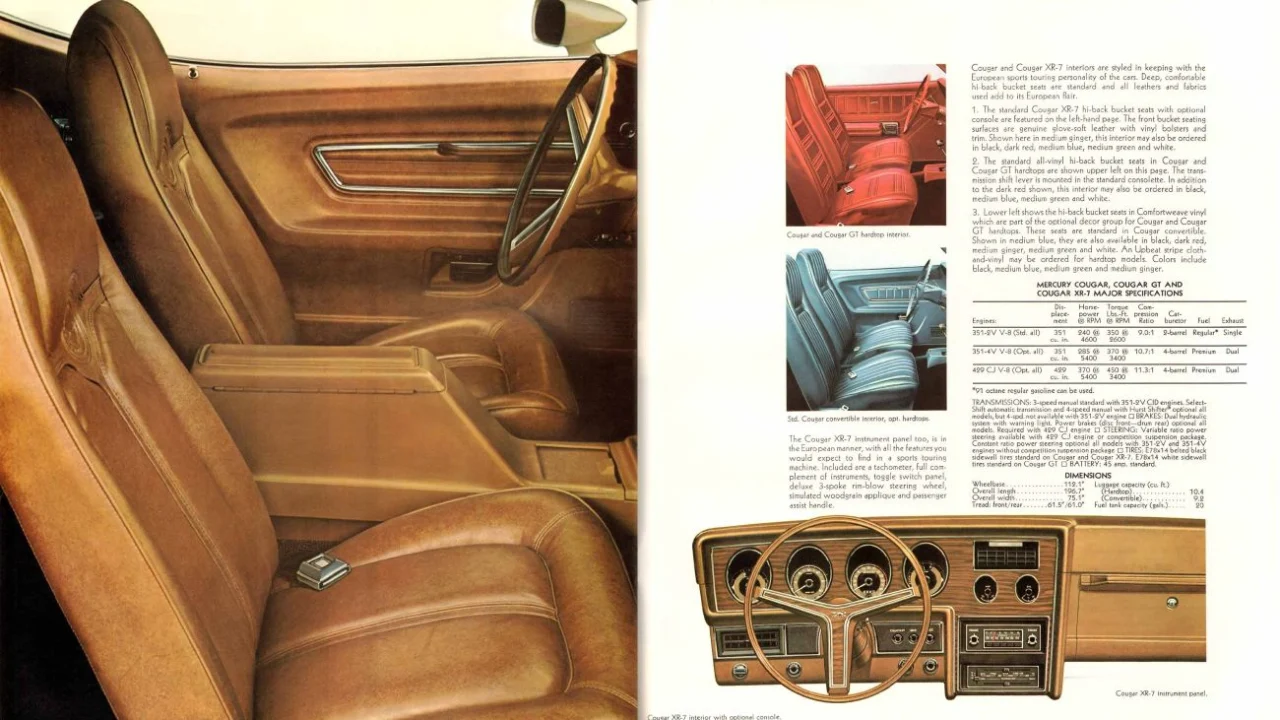While writing my Pick of the Day on a 1972 Mercury Marquis Brougham, I learned more than I ever bargained for thanks to my friend who’s all about Mercury. Dennis Pierachini answered my questions and set me straight after being led astray by several resources, but he also shed light on nuances that will be of interest to pedant-leaning enthusiasts.
The initial ad on ClassicCars.com showed the vehicle to be a Mercury Marquis. Normally, it would be easy to assume it was a base Marquis and not the Marquis Brougham, but not everyone lists vehicles correctly. Looking at a brochure, I learned about a Marquis model that I had never heard of before—the Marquis Deluxe. Somewhat of a clunky name for an upper-middle-class car, wouldn’t you say? Yet I was not able to find anything in my research material that mentioned the Deluxe, though I eventually went back to the brochure and looked at the end page to find my answer—I was looking at a Canadian brochure with a Canadian-specific model.

Digging deeper, I found an American brochure, and it indicated Americans had just a Marquis and Marquis Brougham to choose from. The ad on ClassicCars.com did not specify or show the VIN (maybe the seller should read this), so I focused on trim to help determine which version of Marquis it was. Alas, this Marquis lacked most of the full-length fender top trim that was a feature of the Marquis Brougham, but the interior certainly looked fancy, befitting a car with “Brougham” in its name.

Next, I went to the seller’s site, which happened to have a photo of the car’s VIN—an image that was never uploaded to ClassicCars.com. The body code was 62, which my resources showed to be a Marquis Brougham four-door sedan. Clearly the Brougham trim had been removed for a semi-custom effect.
To be extra sure it was a Brougham, Dennis had me show him a picture of the door panels, which introduced me to a detail about these cars I would have never known except by speaking to a Mercury expert like him: the Hi-back Twin Comfort Lounge Seats in a choice of all-vinyl or cloth and vinyl was an option for the Marquis Brougham, but it also was an option for the base Marquis.

What distinguished the two with the same interior were the door panels, as the Marquis Brougham featured molded door panels (excepting the rare instance of a Brougham with the power windows-delete option). A vehicle with this Lounge interior without the molded door panels would suggest it most likely was a base Marquis.
The 1971-72 Marquis Brougham was one of several Mercury models that featured molded door panels. Starting in 1971, it was a feature of the Cyclone GT, then it was used for the next-generation version—Montego GT—built for 1972-73. The 1971-73 Cougar XR-7 also featured molded door panels, as did base Cougars with the Décor option (a package that was included on convertibles).

According to Dennis, all big Mercurys went to the same basic door panel starting in 1973: fiberboard with an applied plastic armrest base, with pad and series-specific trim patterns, door pulls, courtesy lights, and so forth. The same held true for the redesigned 1974 Cougar and, of course, 1972 Montegos save the GT.
Mystery solved!

